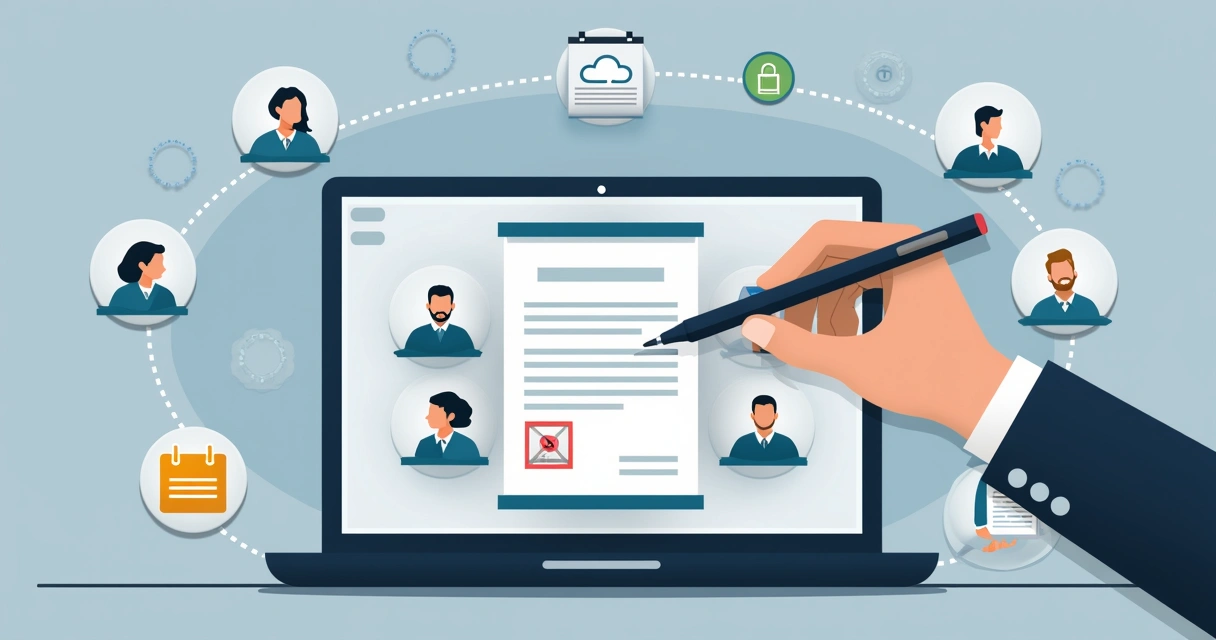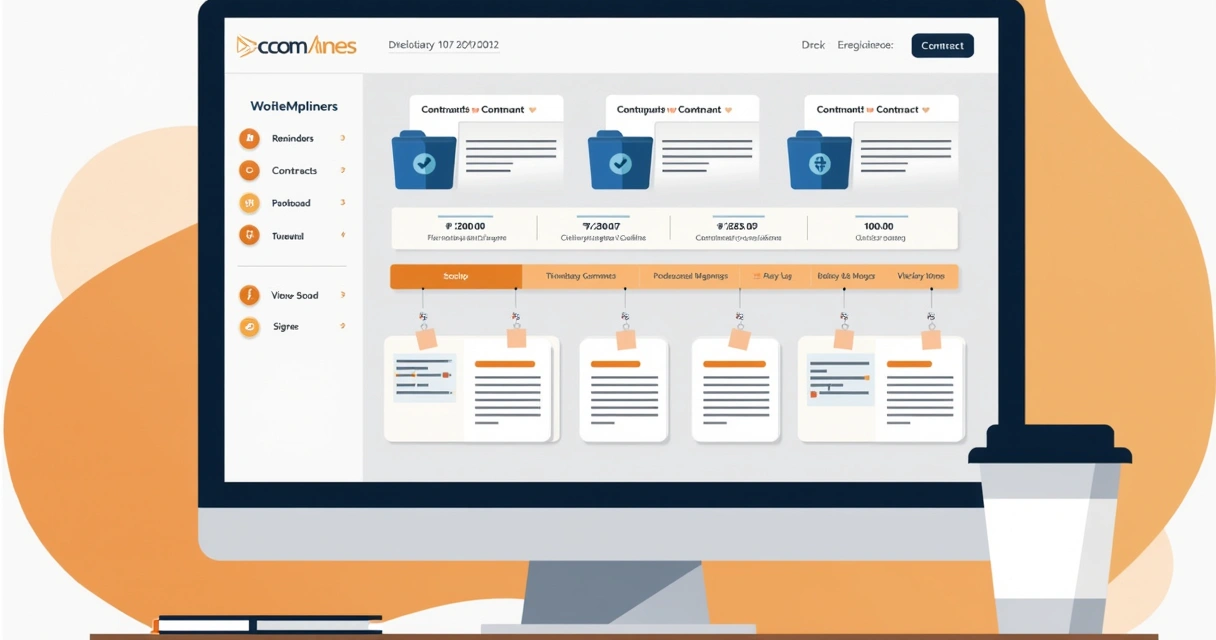The days of printing, scanning, and mailing contracts are fading fast. Now, individuals and businesses can sign and manage documents online, saving time and cutting costs. But is it safe? Is it legal? And most of all, can you do it for free? This guide walks you through the benefits, security measures, legal bases, and best ways to sign contracts online without breaking the bank.
Why move to online contract signing
Remember the old times when waiting for a contract meant lost deals and missed moments? Those days often ended with a printer jam and frustration. Now, signing a contract is as simple as a few clicks, no matter where you are.
- No more paper clutter
- Instant updates for every party
- Track progress and deadlines effortlessly
- Sign from any device
- Automatic reminders so nothing gets lost
So, why aren’t more people doing it? Perhaps they don’t know how easy or secure it has become. Or maybe they’re just not sure which service to trust.
How digital signatures work, simply
When you electronically sign a contract, you create a digital fingerprint unique to both the document and you. This “signature” is tracked and protected with encryption, so tampering becomes almost impossible. The benefits of e-signatures are many: better speed, convenience, robust security, and clear data trails for every action. Electronic signatures can fit perfectly into existing workflows, making them sustainable and efficient for small teams and large enterprises alike.
Signing online is fast. It’s also safe if you pick the right tool.
- Electronic signatures cover most needs, such as NDAs and job offers, by confirming the intent to sign.
- Digital signatures add a technical layer using certificates and stronger authentication, good for compliance-heavy contracts.
- Advanced and Qualified Electronic Signatures (AdES/QES) meet stricter international standards, such as those required by certain European regulations.
Not all online signatures are created equal. Some are just a digital squiggle; others anchor your identity with timestamps, certificates, and audit trails. For clarity, digital signatures meeting eIDAS standards hold the same power in court as handwritten ones in the EU.
The legal backbone: ESIGN, UETA, eIDAS and more
If you’re nervous about using free digital signing, you’re not alone. Legal acceptance is key. In the United States, two main laws guide electronic signatures:
- ESIGN Act: Ensures electronic signatures are as valid as handwritten ones if all parties agree. Four rules must be met: intent to sign, consent, clear association with the record, and an option to retain the record (see full breakdown here).
- UETA: Adopted by most US states, clarifies when and how electronic records and signatures can be used.
Across Europe, contracts are protected by the eIDAS Regulation. This regulation makes digital signatures binding across all EU member states, provided they use an accredited technology. Advanced and qualified electronic signatures (AdES and QES) even go a step further by verifying identity and ensuring authenticity (read more on regional differences here).
Practical steps to free contract signing
It may seem complicated at first, but signing a contract for free online is straightforward. Here’s what a typical process looks like, using a platform like CloudSign.ie:
- Upload your document (PDF, Word, etc.).
- Add signees by entering their email addresses.
- Place signature and initial fields with drag-and-drop simplicity.
- Send the request. The recipients get notified via email.
- Each party reviews and signs digitally, either by drawing, typing, or uploading a scanned signature image.
- Automatic reminders keep things moving.
- Audit trails and logs record changes, signings, and timelines.
- Safely store the signed contract in the platform’s encrypted cloud for easy retrieval.

Platforms with workflow integrations, think Google Drive, Slack, or even your favorite CRM, take things up a notch. CloudSign.ie, for example, allows you to set up automations, like sending finished contracts straight to a shared drive or triggering an invoice right after a signature.
Signature security: what makes it safe
Safety isn't just a word. It’s encryption, reliable identity checks, and full compliance with data rules. Here’s what matters:
- Encryption protects both the document and signature during storage and transit.
- Two-factor authentication adds another barrier, nobody signs unless they should.
- All actions are logged, making fraud much harder to pull off.
- Data storage in compliance with privacy rules, like GDPR in Europe.
Honestly, if a free tool can’t guarantee encryption or solid legal compliance, avoid it. That’s where CloudSign.ie pulls ahead; strong compliance and layered security mean your files are protected, every step of the way.
Free vs paid: what matters most
There are free ways to sign contracts, but not all free solutions are equal. Some limit you to just a handful of documents per month or restrict advanced features like workflow integrations, automatic reminders, or even payment links. Paid versions often unlock more users, automation, advanced analytics, and priority customer support.
Sometimes, free is enough. Sometimes, you need more power.
For individuals or small teams, especially freelancers, a free plan like that offered by CloudSign.ie could be perfect. One sender, up to 21 envelopes per month, robust encryption, and legal compliance. You get what you need without worrying about hidden costs. Premium plans can scale as you grow, but many find the basics are surprisingly generous.

Extra features to look for
Sometimes, the little things make a difference, features nobody thinks they need until they do.
- Automatic reminders nudge participants so contracts never collect dust.
- Real-time notifications let you know the moment someone signs.
- Payment integrations (ideal for sales contracts or freelancers wanting a quick deposit).
- Document versioning and audit logs keep your process transparent.
- Workflow and cloud integrations stitch digital contracts seamlessly into your daily business.
If you want to see how these options play out in real use, check the CloudSign.ie guide to signing documents online for free, the simple guide for fast and secure document signing, or take a look at our step-by-step e-signature walkthrough. These go into the practical step-by-step details for getting started.
Other platforms, like Dropbox Sign and DocuSign, exist, but many find CloudSign.ie’s transparent pricing and unlimited storage options appealing. While some competitors limit free access or restrict integrations, CloudSign.ie’s free tier is excellent for those who sign contracts regularly but don’t want the commitment of a monthly fee.
For more nuanced advice, the beginner’s guide to electronic signatures covers the basics, while the article on common e-signature mistakes helps you avoid typical pitfalls.
Conclusion
Switching to online contract signing brings more than just saved paper. It’s about smoother business, fewer headaches, and staying competitive. With platforms like CloudSign.ie, even individuals or small teams can make contracts digital, easily and free for most needs. If you value time, security, flexibility, and a touch of automation, now is the perfect moment to try a free service and see how simple business can become. Want to discover how digital contracts can transform your workflow? Get started with CloudSign.ie today and experience change for yourself.
Frequently asked questions
What is online contract signing?
Online contract signing means approving or legally agreeing to a document through the internet. It usually involves digital or electronic signatures, these can be typed names, drawn signatures, or even more secure encrypted marks. Platforms manage this process, record who signed, and create a legally valid, tamper-resistant document.
How do I sign contracts for free?
To sign contracts for free, use a trusted platform like CloudSign.ie’s free plan: upload your file, define signers, add signature fields, and send it for review. Most tools, including CloudSign.ie, let a single user send up to a set number of documents per month at zero cost. Free guides are available to help newcomers, such as the step-by-step articles mentioned above.
Are free e-signature tools secure?
Not every free e-signature tool is safe. Security depends on encryption, authentication, audit logs, and adherence to legal frameworks like eIDAS and GDPR. CloudSign.ie’s free offering includes these protections, making it suitable for most individual and small business needs.
What are the best free contract sign platforms?
Top free platforms include CloudSign.ie, which stands out for legal compliance, workflow integration, and generous free limits per month. While others like Dropbox Sign and DocuSign have free plans, CloudSign.ie’s unrestricted usage and strong security features make it a preferred choice for many.
Can I manage documents online for free?
Yes, managing documents online is possible for free with platforms like CloudSign.ie. You can track, archive, and share signed documents, receive notifications, set up automatic reminders, and integrate with storage or workflow services, all on the free plan. For larger teams or more documents, paid upgrades unlock more advanced features.
